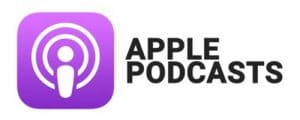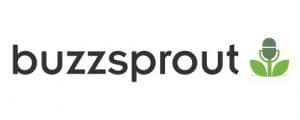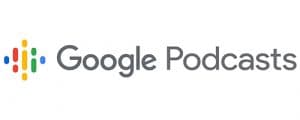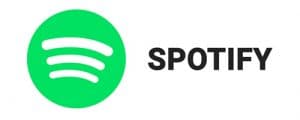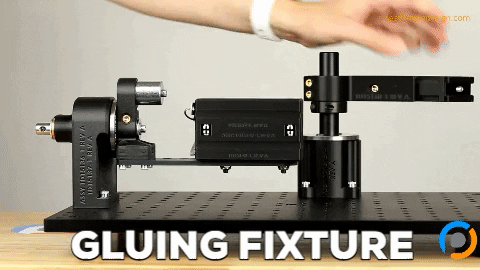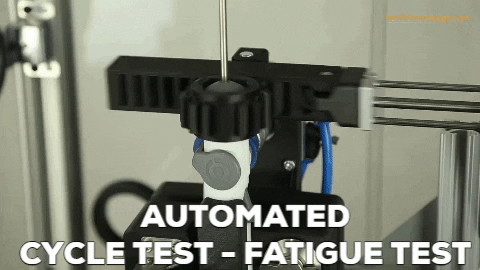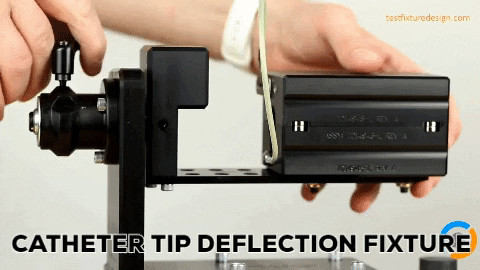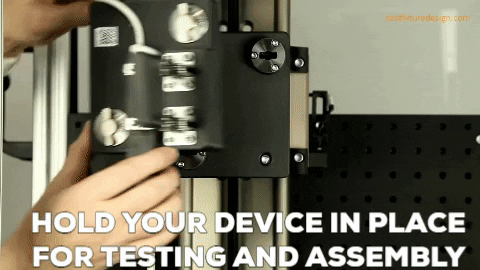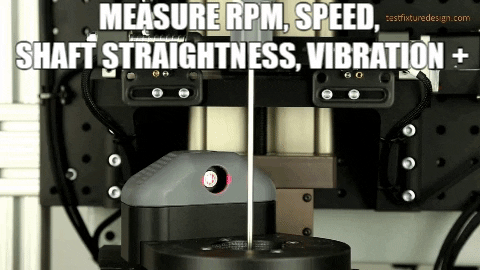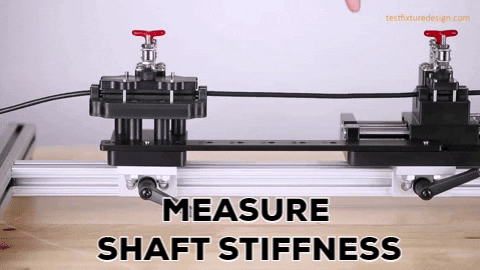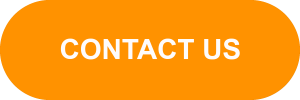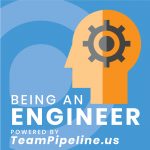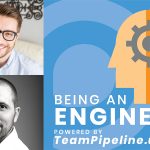Nate Post | Side Hustles, Asking Dumb Questions, & Not Compromising Your Values
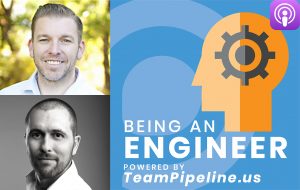
Who is Nate Post?
Nate Post has a disarming way about him. You’ll hear it in the interview. It’s a big part of why he has been able to create such a safe environment for his team to operate in, both from a physical standpoint as well as a psychological standpoint.
From his role as a new product introduction manager to his side hustle of handmaking artisanal cutlery at Blue Collar Blades, the care and attention he gives to his activities are inspirational and exemplary of what a genuine leader should be.
EXPAND TO VIEW EPISODE TRANSCRIPTION
SUMMARY KEYWORDS
work, knife, people, manufacturing, learn, operators, pipeline, great, feel, team, experience, kitchen cutlery, put, call, share, doghouse, grew, bit, engineering, nate
SPEAKERS
Nate Post, Presenter, Aaron Moncur
Aaron Moncur 00:01
Hello, dear listener, we are looking to add a new member to our engineering team again. Ideally, we’re looking for a Senior Level Mechanical Design Engineer in the Phoenix area who has experienced designing custom automated machines, equipment and test fixtures. Also, having working experience with controls and system integration would be a big plus, if you’d like to apply or suggest someone, please email us at info@teampipeline.us.
Presenter 00:34
The Being an Engineer Podcast is a repository for industry knowledge and a tool through which engineers learn about and connect with relevant companies, technologies, people resources and opportunities. Enjoy the show.
Nate Post 00:49
So I’ve tried doing it on my own a few times. And you just get for me my experience is you just get burnt out a little bit quicker. And then you start wondering if the grass is greener on the other side. And it’s not always greener on the other side. And if you’re willing to be humble and say, Hey, I can use a hand to get this done. I’ve been surprised every time at the number of people willing to just swarm and help.
Aaron Moncur 01:29
Hello, and welcome to another episode of The Being an Engineer Podcast. They were speaking with Nate Post, who is a new product introduction manager at Edwards Lifesciences and has held previous positions at medical and GE Healthcare to other heavy hitters in the medical device world. He holds an Associate’s Degree in Computer Science and Electronics Engineering Technology and a Bachelor’s Degree in Business Management. Nate, thank you so much for being with us today.
Nate Post 01:59
Hey, thanks, for having me here. And I really appreciate it. I’m glad to be here.
Aaron Moncur 02:02
Good. Can you share a little about how you got started in the engineering and manufacturing world?
Nate Post 02:11
Um, I guess it was out of desperation. Right. So
Aaron Moncur 02:16
A good story.
Nate Post 02:17
Yeah, I got married quickly. Quickly, meaning when I moved to Utah, we got married and didn’t really know anyone or anything out here in Utah, as far as business didn’t have those contacts like I did when I grew up in California. I had friends in all sorts of different companies. I grew up working on cars, I thought that’s where I was gonna be my whole life. So first few years of marriage, doing framing found out Oh, we’re pregnant. And I haven’t even gone back to school to college yet. So I actually took a pay cut from framing and jumped into the med device industry as an operator. And I did that because I was going to school at that time for my associates degree in Computer Science and Engineering. And I got to learn firsthand that I really love working with my hands. I love the manufacturing environment. And I really like building a product that’s going to help someone else it’s going to improve their life, it’s going to give them a result, they’ll know hey, we’re okay. Or we’re not okay, and what do we need to do to get better?
Aaron Moncur 03:19
Now, that’s a sentiment. I’ve heard so many times from medical device engineers. I’m here because I love seeing the impact it has on people. Yeah. Well, your your role right now is New Product Introduction Manager. What does the New Product Introduction Manager do?
Nate Post 03:36
That’s a really good question. So what I’m doing now is at a high level, looking at the entire business, so unless on manufacturing, that’s a part of my role, I’ll go in and work with the manufacturing teams. But I’m looking at the entire global supply chain end to end, how are we doing when we go to launch this product? Are suppliers ready? Is our manufacturing team ready? And are we going to be able to get our products to our patients in a timely manner?
Aaron Moncur 04:06
That must be a little bit more challenging right now with COVID and supply chains being interrupted? Has that been a much of a challenge or not? Not so much.
Nate Post 04:16
So the company I’m working at I feel has been pretty resilient. There are some challenges, but people are flexing and getting very creative. Like we’re meeting today, virtually, there’s virtual ways to meet with people. suppliers are getting creative in the way that they’re maintaining quality standards and and helping us get what we need when we need it. Innovation hasn’t stopped, are continuing to evolve. So I haven’t seen the disruption at this company to the way I’ve heard in the news, how it’s impacted other companies. Nice.
Aaron Moncur 04:51
What, what are some of the things that you like most about your day to day operations in your job?
Nate Post 04:57
Oh, man, I love that there’s never a dull moment. I’m not just in one project. So one moment, I’m working with a team who’s working on a delivery system. And then the next minute, I’m working with a team that’s working on another component or an improvement. I’m spanning several different teams and learning and working with lots of different people there. It’s always changing, it’s always evolving. I will say one of the most challenging parts of my role is remembering all the launch dates. So like. So because we don’t have I don’t have just one launch date I’m worried about or like, for a launch date, like when we’re hitting a milestone internally, it’s not just one project, I’m involved in like, say, three or four big projects. And then each one will have multiple milestones or dates within those. So it’s really easy. It’s not like I’m just trying to remember my wife and kids birthdays anymore. There’s like 10 birthdays for each project. At times, usually, there’s three or four major ones. But that’s been the struggle, or the hardest part of this role is keeping all the dates aligned with all the big projects and how they align with the global supply chain.
Aaron Moncur 06:16
Has there been a project and if possible, a specific story that you can share about a project where a deadline was coming up, you weren’t gonna make it. And then I don’t know, the team pulled some all nighters, or you figured out some solution to hit that deadline, after all, anything come to mind.
Nate Post 06:38
So I’m thinking, there hasn’t been one where I feel like the deadlines gonna be missed. There’s been times where team members have been absent. And we know we still have to get this work done. Like when I was fully immersed in manufacturing, whether as a supervisor or technician at points in my career, and we have people out whether it’s for paternity leave, maternity leave, personal injury, vacation, whatever the case may be out. And this work still has to get done. And it’s just figuring out how to put in the extra effort extra hours to get things done. And I’ve seen teams rally around that, I don’t have a specific example, that I can share other than it’s just what I’ve seen work in my career, so far, has been being able to identify that there’s a gap, and then working with others to find a way to fill it, not just doing it on your own. So I’ve tried doing it on my own a few times. And you just get for me, my experience is you just get burnt out a little bit quicker. And then you start wondering if the grass is greener on the other side. And it’s not always greener on the other side. And if you’re willing to be humble and say, Hey, I can use a hand to get this done. I’ve been surprised every time at the number of people willing to just swarm and help and not judge.
Aaron Moncur 08:01
Well, I think I just heard the episode intro. That was great. Awesome. Well, how has not being formally trained as an engineer helps you see things and find solutions that others may have missed?
Nate Post 08:19
So that’s, that’s a great question. So I get to come to attack problems and questions. Literally as like, this is just an idea. Like, I would say, I don’t have the education that I went through and got my mechanical engineering degree, we’ll say, right, if we were to pick an actual engineering degree, right? So I’ll come to a situation say, Well, why could Why can’t we cut a window in this box, fill it up with a fluid and look at it, so at one point in my career, we had this, this high voltage tank and it would make noises and we could hear things were going on. And I loved aquariums as a kid. And I loved working on Colorado’s as a team. And one point in the teens I, I’m dating myself the 80s and 90s here, right? We would put plexiglass windows into C amplifiers. So I’m like, why can’t we take the plexiglass windows from the amplifiers? To show both those in car shows? Why can’t we take it seal it like you would an aquarium and then just put it in this metal box? And I had a lot of people say no, we can’t do this, because it’s going to displace the quantity of oil. I’m like, come on, this is like, what three millimeters in thickness, it’s going to displace it over at the size of a piece of paper. So the non educated person, I get to play that card. I didn’t have to go through thermodynamics. I didn’t have to understand how oil is in viscosity is going to change. And I just want to see what’s happening. One of my mentors early on, and I met him at GE, the greatest thing I learned from him was I’m blind, tell me what you see. So I took that literal with everything I talked about just a moment ago and applied it to this, this voltage tank and we were able to see things we hadn’t seen before. So that that was awesome.
Aaron Moncur 10:06
That I think that’s a really good point. Because asking what what one person might consider to be a silly question can lead to really good solutions or really interesting, new, innovative ideas. And it’s so easy for us to feel embarrassed, maybe or awkward about asking a question that we might, we might think, shoot, everyone in this room is going to think I’m dumb, or I’m not smart enough, or I shouldn’t be here. But more often than not, those questions can lead to really interesting insights and new ideas. So it’s important for us I think, to be a little courageous in that aspect, and not be not being too worried about what people think about us ask the question anyway, and and see what comes of it. This just reminded me of an experience I had in college as a professor. And whenever someone would raise their hand and say, This is a dumb question, but and then go ahead and answer the question, like, what a terrible way to start a question, right? This is a dumb question. But so our professor who was just awesome, he would cut people off and say, oh, there are no Dumb, dumb questions. Only dumb people. And it was hilarious. It’s just like, cut the person. So funny. Anyway, there are no dumb questions. Did you have something else you were gonna say? looked like you were gonna make?
Nate Post 11:30
Yeah. So another comment about there are no dumb questions. So at another point in my career, I was a technician working on a manufacturing line. And we had this vacuum that was super noisy. I don’t know if you’ve ever been around air compressors that are running all day. And they just get really loud in more, more of like manufacturing environments. So you’re looking, hey, what can I do to quiet this thing up? So something I’ve done for other employers in the past when I was a tech is we’d build a doghouse around it. Some wood then we took scrap material that was installation for packaging. So it was all written off and trashed anyway, so we glued it, after hours, and we got the thing quiet it up? Well, fast forward to a cleanroom environment. And I’m like, Well, I want to make a doghouse. But now I have to worry about particulate. All these things. Yeah, so my manager at the time, probably one of the best managers I’ve ever had. Probably top two. And he gave me some some way she gave me some rope. He’s like, try it out. So I’ve made a doghouse out of extruded aluminum, the 80, 20 stuff. And I put in some plexiglass sheets was an actual plexiglass it was more of a polycarbonate material is whatever it was cleanroom approved right by our by our staff, and put it in there and then put in some plastic trim around it to prevent some of the vibration. Turn it on the lid would vibrate for a moment. And it sounded really bad. Once it stabilized in that compartment. Fast forward 10 years later, they’re still using that today.
Aaron Moncur 13:03
Is that right? Yeah, that’s fantastic.
Nate Post 13:06
So you again, there are no dumb questions. You just try things?
Aaron Moncur 13:11
Yeah, that’s a big win. Yeah, you had this role of operator, which is a role that most engineers never had, right? Because they graduate university with the degree in engineering that they start being an engineer. What else did you learn in that role that might be useful for other engineers,
Nate Post 13:29
Man, I learned not only design for manufacturing when you’re designing the actual product, how it impacts but like workstation design line layout, as an operator, how it impacts someone, their life, their their livelihood, their desire to even go to work, right. At one point, I had a rotisserie of screws on a workbench. And if one screw fell out and dropped into the other bin, like my day was over, because now I went from, yeah, I went from being able to produce, say 20 or 30 units a day down to like five. And I wouldn’t get written up for it right, I need to explain why. And what was going on. My manager is very, very cool about that. But I felt like a personal dig on my ability to produce a quality product for the company, just when the screws are in the wrong bins, right. So understanding how to lay out the workstation working with other operators going, Hey, let’s let’s take all these out and put them in actual order and then set up and reconfigure our station. Every time we had a new skew come through. So for one skew, we’d have our stations set out this way for another skew set out that way. So now that’s fast forward until one of my previous roles when I was an R&D Operations Manager, like the by I hate to sound a little cocky here but the buck stopped with me those. Those operators were depending on me to make sure that when our engineering team was coming out, and we’re setting up these stations that it was done in a way that was safe and effective and repeatable for the operators, right. We needed to treat the operators like a surgeon we don’t need them wasting their time hunting for a box cutter, or looking for something that’s not adding value, we want them only doing value added operations.
Aaron Moncur 15:10
Yeah. You mentioned this manager that you had, who was one of the two best managers you’ve ever had? What was it that he did? Or maybe didn’t do that made him such an effective manager?
Nate Post 15:21
Well, yeah, so great question. So he would allow me to get creative, which I greatly appreciate it. So is here, here’s my set function, we got to do that and do that really well. But get creative. How can you make your job better? But then also, how can you make what you do better for others? Right being of service, certainly, serving the operators, even as a technician at that time, how can I help them and that doghouse led to that. And then also, that manager was instrumental in helping me grow my career. So once a month without failure, we would sit down, regardless of how busy either one of us were, we would look at my goals and objectives for the entire year, and we’d look okay, where are we at today? Oh, this project a is no longer applicable. Okay. Now that it’s no longer applicable, where are we meeting all expectations? Yes or no? And we’d be fair and honest. And then we’d close it out. And then we’d add a new one. And then it wasn’t just the work projects, it was like, okay, education, I was working on an undergrad. What do you need? In order to do that? Do you need a little flex schedule, like still manufacturing, you have to be rigid to some degree, right. But if there’s like an hour flex here or there, that was within reason, most of the time, right? So he would work with me and get creative and ensuring I could finish my degree, as well as do the things I needed to do at work to be successful in my career and helping others.
Aaron Moncur 16:46
I’m curious, who drove that process? Did you go to him and say, Hey, Mr. Manager, I’d like to meet once a month, or was it him that said, Nate, let’s sit down once a month and talk through your goals and see where you are.
Nate Post 16:58
So he’s a rare breed in that he drives those. But I’m also I think, a little rare in that I demand that too. So I, I think this was a collaboration. I think it only worked as well as it did, because we both wanted it. And we both fostered it and work together. Those are still principles that he holds today. I see him from time to time, just went on a walk with him a few days ago. I don’t report to him now. But he’s a great guy, and still a mentor of mine. And he still holds those philosophies and principles where he’s meeting with the people in his team regularly and helping them grow in their career.
Aaron Moncur 17:38
What might you say to a team member who didn’t want to have these these one on one meetings monthly? Maybe the team member thinks this is a waste of time? I know what my goals are? I know how I’m doing. I don’t need your feedback, what might you say to a person like that?
Nate Post 17:55
So I’ve actually had people reporting to me who felt that way. So what I do in those situations is, Well, two things. So one is all dressed the goals quickly and get through that. But then what I do is I spend the rest of the time getting to understand them like and trying to share your goals align with a business value and business needs in trying to share how their contribution is aligning with that. And trying to drive that unity is how I do it. And it doesn’t get fixed, or at least in my experience, it hasn’t been fixed in one or two, it’s staying consistent. It’s by that third or fourth month, you at least me in my experience, I’ve seen people becoming more engaged or seeing the alignment better. It’s where I’ve been.
Aaron Moncur 18:45
Well, I think this leads in really well to the fact that one of your skills is creating safe environments for your team to work in. Can you share some of the strategies that you use to do that?
Nate Post 18:57
Yeah, so we’ll start with like a workstation. Right? So one of the people who taught me about workstation design is you treat it like oceanfront property. So everything at the work level for the operators gonna be the most expensive real estate, I, I grew up on the west coast. So we’ll treat it like Santa Cruz, California, oceanfront property, right. And then as you move out, I won’t name other cities within the day, but you’re moving further away from the coast. Maybe some oceanfront property in Arizona. So as you get higher and higher up on that workstation, so that means we’re trying to look at ergonomics, how often are you going to be reaching or grabbing for something? Are you going to be sweeping is the work height adjustable? Is someone going to get injured? Repetitive is there, ergonomic mats is there proper lighting, proper peepee, things like that.
Aaron Moncur 19:51
That’s a fun way to put it that the, the items right in front of the worker that’s oceanfront property.
Nate Post 19:57
Yeah, so my teacher, my lien teacher, First one gets credit for that. That wasn’t me thing.
Aaron Moncur 20:04
Awesome. Well, you have quite a lot of volunteer experience, I mean outside of work, and one of which was being a coach for underwater robotics in the grade school team. What the heck is underwater robotics? And how did you get into that?
Nate Post 20:20
Yeah. So thanks so much. So, for asking my son, he one of my sons, he was in still in STEM programs. And the teacher in the class. She’s an amazing teacher, her name is Mrs. Metz, she’s just awesome. She has this addictive personality where I feel like I’m a good person, but she wants me to be the best version of me. So she asked me, Hey, can you help? And I was a little nervous. I was like, I don’t know what I’m committing to. I don’t know, I don’t know what this is, like, how many hours and I, I just see a movies as a kid with kids running rampant in a classroom when there’s a substitute here, right. I was a little hooligan at times in grade school when we had subs, so I was like, oh, karma is coming around. But I jumped in, I help out another parent had started setting this up, and I just fell in love with it actually fell in, I’ll get more into the underwater robotics piece. But I fell in love with teaching and helping so much. actually looked at what would it take to become a full time teacher? Um, unfortunately, that pay cut is just so massive. I was like, I could do it if I had to. But I don’t want to.
Aaron Moncur 21:37
Yeah, that’s bad.
Nate Post 21:38
I don’t know how our teachers are able to manage the way they are. I really feel like there’s some underpaid heroes. Just doing amazing things. Absolutely. So the underwater robotics itself? I think it started from the US Navy. I’m not totally sure. So we’ll have to fact check that for us. But I think it started there. But where I jumped in is Utah has their it’s the UUR are so it’s the Utah Underwater Robotics Association. So a university close to us is BYU. And they’re actually hosting this. And I’m not quite sure if the competition spans the entire state, or more just the Salt Lake Utah County area. So along what we call the Wasatch Front, I’m not sure how big it is. But what happens is you have teachers volunteers, and then of course, the students, right, the students are the ones doing all the heavy lifting. And you get all these great schools together. And and I’ve even seen up to high school students do this and go to these competitions. And we have a standard kit. And we’re literally using PVC pipe use for sprinkler systems we’re using. I’m not sure if everyone remembers what these are, but 35 millimeter film cases for when you’re taking pictures the little case. So we’re actually having to get those teaching the kids how to use a drill or drill press and they’re drilling holes in there, they’re getting the wax you’d have out of a toilet bowl for sealing it to the ground. We’re heating it up in an oven destroyed some welding gloves in the process. I didn’t have anything else that was insulated. Because parents and faculty, they’re all donating their time, efforts and energy and whatever they have laying around. So I donated some some gloves. And we’re packing these filling cases in we’re teaching kids how to waterproof the motor. So they’ll actually solder on all their leads, wrap them and then pack them into this glue that goes everywhere and smells funny, which is that wax right? tape them all off. The hardest thing that I’ve learned, so anyone who’s looking to get into the robotics, underwater robotics in their areas, is really find a way to where the props the propellers can stay on. So we’ve tried numerous things. The best we found so far is spinning the motors with and then using like really aggressive grit, like 80 grit sandpaper, to really rough up the shaft and then on a poxy a waterproof epoxy with the prop seems to work the best. Um, there’s a bolt system out there. We’ve noticed that even those have failed, and I wasn’t sure they were with other schools. I wasn’t sure if there’s like an installation failure. And the cost on those is pretty high as well. So we’re trying to be cost effective. We’re using school funds and donations from parents and family in the community to do this.
Aaron Moncur 24:26
What’s the objective of the robot? I mean, is this like a little submarine or something? Yep.
Nate Post 24:30
Oh, yeah, exactly. So it’ll be a little bit different every year. So when you’re done, you will go to a pool for the competition and kids will be there all day. And there’s going to be obstacles set up in the pool. Sometimes it’s the thing is we need to get some food or some type of supplies to some fish. We need to remove some type of chemical maybe there’s like a barrel that needs to be removed. So we have to put hooks on these. We have to keep the footprint within a certain size, we can maneuver the students can maneuver. And everything’s done. Analog, it’s all done through switches and stuff. So there’s a driver and up in a pilot. So someone’s feeding in this 30 foot wire into the pool that’s physically connected, it looks like a cat five cable. And that’s basically what it is. And that all wired up and they’re maneuvering. And then there’s actual students, college students from BYU for this for us. They’re in the pool with all these electronics on like you guys. But they’re in there, it’s all low voltage, low current, but they’re in there, and then they’re helping the kids get, get the robots back out if there was catastrophic failure, and things like that. And then the kids have to learn about buoyancy, because we want this to be able to sink a little bit, but not all the way to the bottom, because not all, not all the activities are on the bottom of the pool.
Aaron Moncur 25:54
How great that sounds like so much fun. I think activities like that or are, can be pivotal for kids. I remember when I was in high school, I don’t remember a whole lot about the classes I took in high school for the most part, they were just not very memorable. But I had this one physics class. And the teacher we had for this physics class, we had a quarterly, I don’t know what it was called a challenge or a big project. And two of them, I remember very well one, we had to make an air cannon and blow out candles that were some distance away. And me and my partner, we had this awesome Air Canada, it was like six feet long. And we had a shower curtain that acted as this huge membrane and we pull it back and it was spring loaded and let it go to whoosh, spit air out the end. And we can blow candles that were all the way across the classroom. And we just thought that was so cool. And then the other one, we had a pool challenge. We had this big county pool, I guess. And it was it was like an Olympic-sized swimming pool. So it was really long. And we had to build a boat that we could paddle across the entire pool out of cardboard. Looking back, it seems like a really bad idea to put all this cardboard in this this big Olympic sized swimming pool. But we did that and ours was great. And those two experiences have stayed with me, for all this time because there were so fun. We got to get to build something. We got to learn some physics in the process. And learning paired with doing is such a powerful combination, I think.
Nate Post 27:30
Oh yeah, definitely that air cannons almost sounds like maybe we have to call it an air cannon for the podcast. It almost sounds like gateway drug to potato gun man.
Aaron Moncur 27:41
Yeah, maybe, that would be that would be another fun one, right? It’s a potato gun. Those things can get pretty dangerous to us. That’s probably why they didn’t have it in high school. Yeah, well, let me take just a real short break here and share it with the listeners that teampipeline.us is where you can learn more about how we help medical device and other product engineering or manufacturing teams develop turnkey equipment, custom fixtures and automated machines to characterize inspect, assemble, manufacture and perform verification testing on your devices. Or speaking with Nate Post today, who has a really cool side hustle that we need to talk about. This is called Blue Collar Blades. Tell me a little about what this is and how you got into it.
Nate Post 28:28
Yeah, so as I was telling you a little bit earlier, and I was grew up working on cars. So I had a project car. And I noticed that the project car whenever I was done working on it, I didn’t come in smiling as often as I should have. And I felt like it was taking a lot of time and resources away from the family. So I parted ways with this car that I really didn’t want to part ways with still emotionally tied to that thing. But I parted ways with it. And I’m left like okay, all my hobbies, all this mechanical, like touching and working and tactile stuff is gone. I’ve returned to YouTube, like anyone would these days. And I watch a video and I hear a story about this guy who is an author by trade needed some time to decompress in, used basically a floor sander, like a belt center for the floor. And Jimmy rigged it to a bench and made a knife. I’m like, wait a minute, I’ve already welded roll cages, it looks like chip chicken poop, but I’ve welded roll cages, and it’s kept people alive. I have a little more experienced than this person. I was like, that sounds like fun. I’d love to own a three or $400 chef’s knife and I don’t really have three or $400 to go buy one at that time. So I was like, let’s let’s do this. So I was like, Hey, honey, I’m gonna I want to make a knife and she’s like, okay, and she’s super supportive. She she’s, I’m not I’m where I’m at. today because of her and her support, and so she actually helped me find my first my first sander slash grinder, a little Harbor Freight one by 30 belt grinder. And she helped me buy my first handle materials and all these things. And I converted a shed into a workshop and took over a bench in the garage for some other stuff to do with it…
Aaron Moncur 30:22
You went all in on this pretty quick.
Nate Post 30:24
Yeah, well, I took the money from the car and put a little bit towards the house and a little bit towards this guy. Okay. And that’s, that’s how I was able to do that. And, of course, she’s the CFO here. So she was able to, she was able to help finacle a little bit more. So the goal was the first year to make six knives and give him as Christmas gifts to family members. That six quickly got reduced to three.
Aaron Moncur 30:50
The process was just more difficult than he thought. I don’t
Nate Post 30:55
Yeah, maybe it was trying to get the quality of the knife, I was expecting it to be as good as like the photos, I’d seen some videos I’ve seen. And it just wasn’t quite there. And then the time. So originally, when I started, it was taking me like 2025 hours to make one knife. That was the time in my hands, right? That just doesn’t turn into a very profitable side hustle despite my passion. So over the years, I’ve taken my manufacturing experience thinking like an operator thinking like a supervisor or manager, I’ve taken all that and I’ve applied it to where I’ve reduced my touch points to where capacity is not a concern right now for me in the volume that I’m doing. I’m able to keep up with demand just fine. I’m able to now stock my shelves with what I feel is comfortable for for a side hustle. So I’ve been doing this. So I’ve been doing this in total just over six years now.
Aaron Moncur 31:51
How long does it take you now you started 25 hours it took you to make one of these knives. And how about now?
Nate Post 31:57
Yeah, so great question. So I’m roughly around the five and a half to six and a half hour mark for lunch.
Aaron Moncur 32:04
Yeah, time.
Nate Post 32:05
Exactly. And that’s for a standard knife. Now. Occasionally I’ll get these really crazy custom requests, which I love. I love the theme builds I don’t know if if your viewers your listeners have ever watched or seen Orange County Choppers back in the day when this the Tuttle’s would put together these custom bikes for fire departments and all these other things. I just I never thought of that. I just naturally started doing that on my own. And I recently made a knife that was inspired by Magnus Walker. And he’s got this documentary on YouTube. That’s called the Urban Outlaw, and it talks about outlaw Porsches. So I took a lot of these design styling cues, the colors from his cars to iconic Porsches, in particular, and I applied it all to a knife and I’m starting to get more and more clientele who liked my designs but want me to customize the handles or the pins or different things to fit their needs. The craziest request in a fun creative way was recently did a handle that was supposed to be Montana Native American and graffiti punk artists theme, New York is the punk artist
Aaron Moncur 33:18
Quite the combination
Nate Post 33:19
Yeah, so I was like wow, mind blown. So I started running with it before I even like had the deal sealed I was like I don’t care i’m gonna make this knife regardless. I’ll just put it on my website and sell it throw it on Instagram whatever the case may be. This is way too out there to not try and yeah, I lo and behold we never talked price until it was done which is very rare that that never happens other than this situation we always talk prior and get that that sealed and deposit taking care of but this one I was just so passionate about I was like no let’s just go so we ended up on a really cool cedar burl ended up on some red and black resin that a friend another business partner guy reached out to like a supplier he’ll help with handle material for my requests. And got this segment and in there and then we got in some turquoise to bring in the Native American energy just turned out beautiful.
Aaron Moncur 34:16
Walk me through the process. What are the different steps in making handmade cutlery?
Nate Post 34:21
Yeah, so I don’t forge my material. I do what we call stock removal. So I’m buying already ready to go sheets of steel. So I’m getting something that’s anywhere from two inches wide for all the engineers out here right listening in to like four or 511 inches wide and about three feet length will say
Aaron Moncur 34:42
Woah, three feet in length.
Nate Post 34:43
Yeah, anywhere from two to three is what I’m ordering. And I’m using blue dye chem lab fluid. I’m spraying it all over this and then I created my own templates. So I have my own knife designs and I’m laying them out there and I’m cutting them out with cut off wheels, cutting them out with the metal cutting bandsaw and then I go to my belt grinder. And then I rough shape it the rest of the way, go to the drill press drill some holes for the pins. All my knives right now are what we call a full tang knife. So we drill the holes there and then I like brandy my knives, I don’t do the laser engraving, I don’t do some of the etching after the end of the process. So what I do is I brand my knives even before he treats so when the blade still annealed, I stamped my logo in there, unfortunately wood a cow, right and you brand a cow that it’s in there. So if you can wear that logo out, you’ve really used this knife and mad props to you. So I do that. And then I send it out for a treat. I don’t do that in house right now. I’ve done some heat treating, whether some friends ovens or other ways have had access to ovens in the past. Right now I’m sending it all to the best in the business when it comes to, to doing blades there on the East Coast takes about one to two months dependent COVID is actually increased. There’s a lot more people making knives these days because of COVID. And they have a lot of manufacturers that go through them. So they come back, then I do my flat grinds. I brush the blades, I give them a nice satin finish. Then I sharpen them, then I handle, polish up the handles and photograph them give them some beauty shots. Maybe try them out on some food and send them out or post them on the website.
Aaron Moncur 36:29
Very cool. I love that. In general, how much does a custom piece of cutlery cost?
Nate Post 36:37
Yeah, that’s a great question. So I typically use the eight inch chef’s knife as my my starting point. I call that the the mule because it’s the workhorse. Yeah. So those start around $300, 324 is the sweet spot for those. And then the seven inch knife is the armadillo. It got it got its name. Because the first one I ever shipped was to a really good friend of mine in Texas, him and his wife had ordered it as a gift for his wife. And I think one of the animals in Texas is an armadillo. And yeah, I was like, this thing’s cool. It’s got a little turned out turned down in the front and reminds me of an armadillo. It’s small and robust. So yeah, those are in like the 260. It just depends, right? Because I get custom. So you start titanium and all these other things in their prices go all the shores. But yeah, that like 265, 260 is a good sweet spot to start.
Aaron Moncur 37:37
And then you end up with I mean, not just a piece of cutlery, but really a piece of art. Right?
Nate Post 37:42
Yeah, yeah. So I have a another friend, he’s a local maker. And he turns beautiful wood wood bowls, in his goal when he’s turning these bowls, is he wants people to fight over them when they’ve passed on, right. So he wants us to be a family heirloom that people fight over. And I agree that his quality of work is that amazing. Because I bought nimble, I gave it to my mom for Christmas one year. And I’ve already written my name on the bottom telling my brother, which I’ve never done something like that, I think is a good compliment to him. So my goal is to make knives that are built to be used everyday in the kitchen. And eventually the field. And that people want to fight over they want to be proud of they want to keep the but they use them I don’t want to have I don’t want to create trinkets that just lay on the wall, right? Like in the med device industry, we’re creating things that need to get used that are gonna help save someone’s life. Yeah, I’m, I’m helping be creative at home and providing a way for people to be unique in the kitchen, share their story in their knife, and still provide good quality food for themselves, their family and friends.
Aaron Moncur 38:48
I love it. You’re at the beginning, when you started talking about this, you were saying that your first few knives didn’t turn out the way that you saw others on YouTube or whatever. And it made me think of, I started a photography company with a friend of mine quite a while ago is probably oh, close to 15 years ago at this point. But we started this this photography company neither one of us had any real experience with photography really wanted to get some experience running a small business that a photography sounds fun and barrier to entry was low. So we did that turned out I really loved it. And in the beginning, I remember we we take our pictures, right and like, ah, these don’t look like the pictures we see online. And there’s there’s that that period where you’re learning, right, you’re learning the tricks of the trade, and then eventually you get this aspect and you get that aspect and, and and after. Not that long. We’re able to get some, some portraits that were really pretty nice, but it was just funny to hear you say that because I remember going through the same, the same experience myself.
Nate Post 39:53
Yeah, so that actually jogged a memory thing for me. But before I go down that one, what helps you learn in that photography, right? What helps you you get the rude awakening? I’m not as good as what I’ve seen. What sped that up for you? What did you do?
Aaron Moncur 40:08
Honestly, I think it was my engineering brain. Part of what I really loved about photography was the technical aspect of it. In particular lighting, understanding how light works, and, and bringing in my own lighting, not not relying just on natural light, although that’s a great way to go. But I really love bringing in my own lights and having triggers that would flashed the light, using soft boxes and umbrellas and things like that, and using the light to sculpt person’s face for a portrait, for example. And I think my background in engineering and just the technical nature of the work I was doing, as an engineer anyway, helped me learn that aspect of photography more quickly than maybe I would have otherwise.
Nate Post 41:01
Okay, so for me, when you were when you were talking for me, what helped me quite a bit was getting it even a little more hands on and talking to people like we’re talking today. So I started looking around, and I found a gentleman in Utah, who makes these just beautiful knives. And they’re much different than what I do today. He he makes what they call a tally song. It’s really a valley song, his last names tally, and hit in his knife start at, I want to say 770 bucks. They’re absolutely beautiful just dialed in pieces of functional art. So for all these tricks and things, so I messaged this guy elden. And I was like, Hey, can I just come hang out your shop? I won’t ask you any questions I just want to watch. And some people might be intimidated by that. Yeah, asking, let alone here and what the answer may be, but he responded, it took him a little bit to respond, probably ended up in a spam folder or something like that. When I sent it to him. He’s like, Yeah, come on over. I’d love to have you watch love to get to know you. Very, very cool, humble guy. And I just got to sit there and watch. And next thing you know, it’s like, he’s showing me how he’s doing this type of grind. His grinds are much more elaborate than I currently need for kitchen cutlery. I’m really focused on flat grinds. But he’s doing all these hollow grinds, and all these different things. And then he’s like, Hey, why don’t you help me with some handle assembly? So I was like, Okay, so I’m learning fit and finish from him. in about an hour with him 30 minutes, I’m picking up more than I am by myself. With no YouTube with no one right? is just amazing. Like, on my own, it would probably take me three to four months to learn what I’m doing watching a guy at that time had been doing it 15 years, he’s, he’s probably over over 20 years now or pushing 20 years because I met him about a year to two into this, this adventure. And being able to the knifemaking community in particular has just been so open and helpful. Like people don’t look at it as threats as long as you’re honest and transparent about what you want to do. They’re they’re very open and helpful. I’ve learned about taking calibration stones that you’d use in a manufacturing environment and how to use that preheat treat to make sure your blades flat enough, right. So that way when it gets shipped out, the heat treater isn’t like, Oh, now I got to spend 30 minutes of blade trying to get them flat again, right? Just little things like that are just amazing.
Aaron Moncur 43:28
Yeah, and that principle can be applied to any type of learning, right? finding someone who is an expert already, and asking them to mentor you. That is one of the best ways I’ve found for new engineers to be trained is to find a mentor for them.It’s one thing to read something in a textbook, it’s another thing altogether to actually do that thing. We, we started an academy for training, mechanical design engineers, and our our motto is ‘Doing is better than learning about doing.”
Nate Post 44:00
Yeah.
Aaron Moncur 44:00
So much more effective.
Nate Post 44:02
And that brings up a funny memory about mentoring. So I had been mentored quite a bit. And even within my side hustle had the opportunity to learn from people from time to time. But at some point in all of our careers, I hope we get to a point where I’ve, I’ve at least done this so far, is I’ve gotten to become a mentor. And it’s not like oh, I was rubber stamped here. I am now so and so’s mentor. But I was providing a lot of daily guidance. And where I’m going with this is there’s a an engineer fresh out of school knew a production line. And we got to a point where I was like, on this line with this problem. I could really influence this person right now to decide the way I want to have the decision go. But I was like, so I told him I was like, okay, we’re at a point right now where I need you to take the next step like that. I didn’t even say this is what I’m thinking. I was like, there’s multiple ways to solve this, I want you to formulate your own opinion, and then come back to me. And then we’ll have a discussion. And I was transparent. I was like, because I don’t want to influence how you look at this because it could impact quality one way or the other. And I want you to think about it. Because I have my manufacturing mindset on and I’m never going to compromise quality. But I am going to make sure that we can get quality product in a timely manner. Right. So I wanted to make sure that this engineer who was growing in their career had the ability to see and step back and look at the whole situation before just following.
Aaron Moncur 45:35
Yeah, great teaching moment.
Nate Post 45:37
Yeah. So it brought us really close together. And it gave me the opportunity that as moments like that arose, I felt more comfortable saying this is the way I would want to go. And as we came to other situations that were similar after that, but I need you to feel comfortable in this or I need you to look at other options is how we went after that. And it worked really well.
Aaron Moncur 45:58
Well, that is a perfect segue into my next question. What in your experience? What what are the skills and characteristics that the most successful engineers have in common?
Nate Post 46:09
Oh, man, I’m being humble. Willing to willing to roll up their sleeves and get down on the, on the floor into the nitty gritty for me, it’s manufacturing environments where I spent most of my time interacting with engineers, right? So being able to actually go down there and see and do. I’ve had engineers that I’ve worked with actually spend time whether it’s for an hour or two or a day or a week working as an operator on a line. Those are the ones that I’ve noticed, build trust with teams the fastest, and can get quality results that are sustained the longest after fantastic. Yeah.
Aaron Moncur 46:52
What are the biggest challenges that you face at work?
Nate Post 46:59
In my current role, it’s having so many dynamic teams, right? So the teams are constantly changing and growing. It’s where I’m at today. It’s never we’re never sitting idle. We’re always growing. We’re always evolving. We’re always moving around. So it’s understanding who the right people are to work with, and ensuring that we’re all still marching to the same goal. So
Aaron Moncur 47:26
As part of that, just the ability to deal with people.
Nate Post 47:32
Yeah, I love that part, though.
Aaron Moncur 47:35
Yeah. Yeah. I didn’t necessarily mean deal in a bad way. But yeah, the ability to to work with managing communicate with collaborate with people. Yeah, yeah. Yeah. All right. Well, let me let me do one more question here. And then we’ll wrap this up, can you share what either one major success or one major fail that you’ve had in your career, and the lesson that you learned from either of those?
Nate Post 48:03
Um, so I’m being a little raw and vulnerable here.
Aaron Moncur 48:10
So please, I love it. Yeah.
Nate Post 48:15
It’s, I, at least for me, I can’t speak for everyone. Um, we have our own set principles and goals, or like, or like philosophies, I guess not necessarily goals, we have our own our own core values, principles, things like that. At one point in my career, definitely not with my current employer by any stretch of the imagination. But with a player I had at a previous time of my life. I was really forced and challenged to put my beliefs aside and do what was in the best interest of the business despite how I felt. Now, it didn’t, didn’t have any negative impacts to any type of external people. We didn’t necessarily. We didn’t violate any type of quality policies or things like that. It wasn’t even to do with the, with the product, it was to do more with like, people in processes outside of a manufacturing environment is more of like at a leadership level. But I learned that I’m at a point where I’m willing to lose my job, if it means I have to compromise, I’m not going to lie, and being forced to lie isn’t okay. And I’ve, I’ve done it once for a company and I’m never gonna do it again. And I’m never gonna work for an employer that’s going to require me to do that. I have enough confidence in myself and I have enough faith in humanity that if I were to interview with someone, and they’re like, Hey, why are you unemployed? Well, I was unwilling to lie. Here’s the story. I’m not going to try and smear anyone’s name, but this is what happened. And if they’re willing to take me for who I am and what I’m about, then I’m willing to work for them. If they’re not, then that’s another sign that that’s not where I’m going to go. Hopefully, my family and I will be able to make through anything, but I’m not willing To do that, it’s not who I am. It’s not what I’m about.
Aaron Moncur 50:03
Well, thank you for sharing that getting a little bit vulnerable. I, I could hear the what’s the word? I’m looking for? The commitment, I guess?
Nate Post 50:15
Yeah.
Aaron Moncur 50:16
In your voice when when you said that there was almost got chills. So thank you for sharing that that was really great.
Nate Post 50:21
You’re welcome.
Aaron Moncur 50:22
We have some core values at here at Pipeline, and they align very much with with my own personal values. And I’m part of a coaching group for business owners, and they, they talk about core values a lot. And they say that your core values should be things that if team members violate, here’s how, it’s a good core value, if a team member violates the core value, you should be willing to fire that person because of it, or, and this doesn’t necessarily have to do with team members specifically, but you should be willing to lose money in order to uphold that core value. So pretty similar to the sentiment that you just shared.
Nate Post 51:06
Yeah. I had a question about Pipeline. So how long have you guys been around?
Aaron Moncur 51:11
Ever since I got laid off from my last job. Okay. We’re talking about? Yeah, so that was 2009. I got I got laid off. I was an engineer at product development services engineering services company, really great company. And they made the right call, I was not terribly engaged, if I’m being very honest, towards the end of my, my stint there, and the recession hit and, and they cut me. And I started Pipeline after there’s a whole story in the middle of getting laid off and starting pipeline. But that’s, that’s what it was about 11 years ago now. 12 years ago.
Nate Post 51:49
Okay, and how big is pipeline now?
Aaron Moncur 51:51
There are 12 of us on the team right now. So we’re pretty small, nimble team. We have enjoyed slow and steady growth over the past 12 years. But it’s been great.
Nate Post 52:05
It’s so slow and steady wins the race. Just like with making kitchen cutlery for me, it’s always going out there. And just continually trying to learn do a new grind, try new shape. And at times its production style, right? So I’m trying to make 8, 10, 20 knives all the same style. It’s just getting out there keeping the repetition a lot of this is handmade on freehand grinding, right? So it’s keeping my hands fresh my mind right. With your team? Do you guys do anything fun to keep your minds fresh? And everyone going? Good?
Aaron Moncur 52:38
Well, yes, more so before COVID then currently, but one fun thing that we did. It was a an annual event that the company sponsored was, there’s something called a flow writer. Have you ever heard of a flow writer?
Nate Post 52:55
I think is that where it simulates like a wave for surfing?
Aaron Moncur 52:59
Yes, yes, exactly. So Pipeline, the name of the company comes from one of the most famous surfing beaches in the world Bonsai Pipeline, on the North Shore of Oahu, I grew up. And so I grew up surfing and bodyboarding. And the pipeline is just a throwback to my days in the ocean in Hawaii. So when I learned about this flow rider thing, and turns out, they have one just down the road here locally, I started renting it out for a few hours in during the summer, and the whole team would get together, we’d go to the flow rider and spend a few hours eating delicious food and jumping on the flow writer and it was just so much fun. I’m very much looking forward to the day when we can start doing that again, hopefully, maybe even this summer of vaccinations get distributed quickly enough.
Nate Post 53:49
Yeah, that’d be awesome. Yeah, I’m looking forward to even just a small weekend trip with my family, and absolutely. And the company events, they’re always amazing. Being able to connect with people and just relax, talk about work, but maybe not really talk about work and just get to know each other more on a personal level and stuff.
Aaron Moncur 54:08
Yep. 100%. Yeah.
Nate Post 54:10
Awesome, man.
Aaron Moncur 54:12
Thank you for asking me a few questions. That was fun, I guess. Talk about myself a little bit.
Nate Post 54:18
Well, Nate. Yeah. So I suggest we do this again. But we flip the script where I get to interview you and give give the audience a chance to get to know you a little bit better. Maybe people are finding Pipeline for the first time. They want to get to know, Aaron, that we could do a little Q&A with Aaron.
Aaron Moncur 54:33
I’m all for it. We need to schedule that.
Nate Post 54:35
All right. Yeah. You’re pretty busy guy. So it might be a month or two or three out but…
Aaron Moncur 54:41
Oh, and you your yourself as well, with all of your handmade cutlery grinding going on?
Nate Post 54:45
Yeah, yeah, definitely. And then you got a family and got growing kids, and they all have different hobbies and interests. So yeah, thanks for having me today. I really appreciate it.
Aaron Moncur 54:56
Absolutely. Yeah. Nate, thank you so much. I really appreciate you hanging out with us today.
Nate Post 55:01
Yeah, hey, before I go if you don’t mind the cheap plug…
Aaron Moncur 55:05
Absolutely
Nate Post 55:06
Plug away. So if people are ever interested in handmade kitchen cutlery, go on over to Instagram and search for Blue Collar Blades built by the working class for the working class. And I would like to boast that I trademarked the name, just this last year my grandmother passed away, not due to COVID but it was during the pandemic so I didn’t feel comfortable traveling out so on the day she passed away, I went and submitted for a trademark application and memory of her and went through the whole process without a lawyer I self represented myself and went through that whole process and, and earn trademark just for the name as well as for the logo, the way we brand every knife. So head on over there and check it out. And then if you know professional connections, I’m always open to don’t don’t come to me on LinkedIn and trying to sell me a new widget or gadget. We’re good. We’ll find you if we need it. But if you want to you want a professional connection like you’re someone like Aaron, I’d love to get to know you. It’s Nate Post on LinkedIn, feel free to look me up. I’d love to get to know you.
Aaron Moncur 56:11
Awesome. Blue Collar Blades, Nate Post. Thank you so much, man. Appreciate it.
Nate Post 56:15
Yeah, I’m looking forward to interviewing you. I’m not gonna let you off the hook for that one either.
Aaron Moncur 56:18
All right. All right. We’ll schedule that for sure.
Nate Post 56:21
All right, man. Talk to you soon.
Aaron Moncur 56:22
I’m Aaron Moncur, founder of Pipeline Design, and Engineering. If you liked what you heard today, please share the episode. To learn how your team can leverage our team’s expertise developing turnkey equipment, custom fixtures and automated machines and with product design, visit us at teampipeline.us. Thanks for listening.
We hope you enjoyed this episode of the Being an Engineer Podcast.
Help us rank as the #1 engineering podcast on Apple and Spotify by leaving a review for us.
Find us under the category: mechanical engineering podcast on Apple Podcasts.
Being an Engineer podcast is a go-to resource and podcast for engineering students on Spotify, too.
Aaron Moncur and Rafael Testai love hearing from their listeners, so feel free to email us, connect on Facebook, Twitter, Instagram, and subscribe on Apple Podcast and Spotify!
About Being An Engineer
The Being An Engineer podcast is brought to you by Pipeline Design & Engineering. Pipeline partners with medical & other device engineering teams who need turnkey equipment such as cycle test machines, custom test fixtures, automation equipment, assembly jigs, inspection stations and more. You can find us on the web at www.teampipeline.us.
You’ve read this far! Therefore, it’s time to turn your headphones up and listen now to this episode to learn all these. Don’t forget to tell your friends who might like this too!

